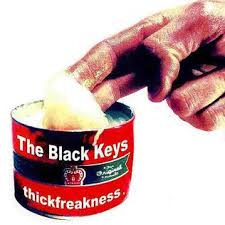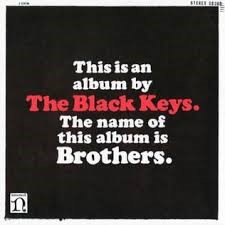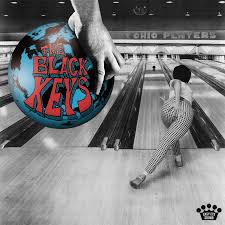The Black Keys music: Essential Songs and Albums

The Black Keys music: Essential Songs and Albums
With a career spanning over two decades, The Black Keys have become one of the most recognizable names in modern rock. Their gritty sound, consistent evolution, and dedication to raw, blues-inspired music have earned them a loyal global following. Before diving into their essential albums and standout tracks, let’s answer some of the most frequently asked questions about the band.
Who are the members of The Black Keys?
Dan Auerbach (vocals, guitar) and Patrick Carney (drums).
Where are The Black Keys from?
They’re from Akron, Ohio.
What genre of music do The Black Keys play?
They’re known for blues rock, garage rock, indie rock, and punk blues.
When did The Black Keys form?
They officially formed in 2001.
What are The Black Keys' most popular songs?
Their best-known tracks include “Lonely Boy,” “Gold on the Ceiling,” “Tighten Up,” “Little Black Submarines,” “Howlin’ for You,” and “Wild Child.”
How many albums do The Black Keys have?
As of 2024, they’ve released 12 studio albums. Ohio Players dropped in 2024, and No Rain, No Flowers is announced for later the same year.
What was The Black Keys' breakthrough album?
Brothers (2010) and El Camino (2011) are widely considered their breakthrough releases.
Why are they called The Black Keys?
Their name came from an acquaintance, Alfred McMoore, who used “black keys” as a phrase for people who upset him.
Do The Black Keys still tour?
Yes, they continue to tour regularly.
What are some facts about The Black Keys?
They self-produced their early work, took a hiatus for solo projects, won multiple Grammys, and draw from blues legends like Junior Kimbrough and rock inspirations like Captain Beefheart.
The Albums
1. The Big Come Up (2002)

Released in 2002, The Big Come Up introduced Black Keys Music to a niche but growing garage blues audience. The album was raw, with a DIY spirit that defined their early identity. Dan Auerbach and Patrick Carney recorded it in a basement using outdated equipment, giving the music an intentionally unpolished edge.
While the production remained lo-fi, the sound burst with confidence. Tracks like “I’ll Be Your Man” and their cover of “She Said, She Said” gained attention, helping Black Keys Music carve space in the indie rock scene. Many critics compared the duo’s minimalist approach to early rock and blues acts, noting how they relied on mood and groove rather than overproduction.
Because the album arrived during a garage rock resurgence, it connected well with audiences looking for authenticity. It didn’t chart high, but its influence grew steadily. Importantly, The Big Come Up laid the groundwork for their gritty, riff-driven sound that would later evolve into mainstream success.
2. Thickfreakness (2003)

Released in 2003, Thickfreakness marked a sharp evolution in Black Keys Music. The band recorded the entire album in just 14 hours, using a Tascam 8-track recorder in Patrick Carney’s basement. That urgency translated into a heavier, fuzzier sound compared to their debut.
With Thickfreakness, the duo leaned harder into blues-rock, blending gritty riffs and distorted vocals. Songs like “Set You Free” and the title track caught industry attention. As a result, the album helped solidify Black Keys Music as a force in the underground rock scene. While still unpolished, the music displayed more technical control and songwriting direction than on their debut.
Critics responded positively, praising the band's ability to channel vintage blues into a modern, loud format. Fans appreciated the rawness and the emotional weight beneath the distortion. The record didn't reach mainstream charts, but it fueled growing word-of-mouth buzz. Over time, it became a cult favorite.
Thickfreakness also began establishing their reputation for relentless touring. That exposure allowed them to build a loyal audience across college towns and indie venues. Although they were still a long way from Grammy stages, the groundwork was being laid for future success. The energy, tone, and fearless delivery made Thickfreakness a critical part of their early rise.
3. Rubber Factory (2004)

Rubber Factory arrived in 2004 and quickly became a defining moment in Black Keys Music. After losing access to their former basement studio, Dan Auerbach and Patrick Carney recorded the album in an abandoned rubber factory in Akron. That gritty backdrop shaped the atmosphere of the record—industrial, urgent, and emotionally intense.
Musically, the band refined their blues-influenced garage rock sound. This time, they introduced more dynamic shifts in tempo, sharper riffs, and layered textures. Tracks like “10 A.M. Automatic” drew significant radio and TV attention, helping Black Keys Music gain broader recognition. Even without major-label support, the album found its way into critical year-end lists.
The album’s lo-fi energy felt deliberate rather than circumstantial. Moreover, its balance of controlled chaos and raw soul set it apart from their previous work. Critics admired the band's ability to evolve without compromising their identity. The songwriting now felt more confident, and the instrumentation more intricate.
Commercially, Rubber Factory performed better than its predecessors. It charted on the Billboard Independent Albums list and became a favorite among rock journalists. While the album didn’t push them into stardom yet, it marked their growing credibility in the rock community.
Additionally, their touring intensified following its release, exposing larger audiences to their stripped-back power. Though future records would bring more polish and commercial success, Rubber Factory remained a fan favorite for its raw authenticity and tight execution.
4. Magic Potion (2006)

Released in 2006, Magic Potion marked a pivotal point in Black Keys Music. It was their first album with Nonesuch Records, representing their move from lo-fi independents to a broader platform. Despite the label change, the band kept full control of their sound—recording, mixing, and producing everything themselves.
The music leaned heavily into blues rock but introduced more patience and groove. Compared to earlier albums, the tempo slowed slightly, allowing for heavier riffs and a fuller sound. Tracks like “Your Touch” helped push Black Keys Music into wider rotation, especially on college radio and alternative playlists.
Critics gave the album mixed reviews. Some appreciated the consistency and grit, while others felt it lacked surprise. Even so, fans embraced the album’s raw tones and familiar energy. The band didn’t chase trends—they stuck to their analog roots and deep rhythmic foundations.
Commercially, Magic Potion did well. It debuted on the Billboard 200 and pushed the band further into the spotlight. More importantly, it strengthened their growing reputation as a hardworking, authentic rock act. The album also helped lay the groundwork for their creative leap on later releases like Attack & Release and Brothers.
While not their most experimental album, Magic Potion proved their formula still worked. It balanced studio precision with emotional grit. The duo’s chemistry—tight drumming and swampy guitar—remained unmistakable and unmistakably theirs.
5. Attack & Release (2008)

Attack & Release, released in 2008, marked a significant evolution in Black Keys Music. It was their first album produced by an outside collaborator—Danger Mouse—who added subtle layers to their signature raw sound. Although still rooted in blues rock, the album introduced deeper textures, organ flourishes, and more structured songwriting.
This change didn’t dilute their core identity. Instead, it expanded their reach. Songs like “Strange Times” and “I Got Mine” showcased a richer, more dynamic version of Black Keys Music. The production felt tighter, the grooves sharper, and the themes more reflective. Yet, the grit and authenticity remained intact.
Critics praised the band for stepping forward without abandoning their roots. The album appeared on several “best of the year” lists, cementing their reputation as a modern blues-rock powerhouse. Many noted it was their most complete work to date, with cohesive flow and standout tracks throughout.
Commercially, Attack & Release reached new heights for the band. It charted on the Billboard 200 and earned them their first serious radio play. That exposure helped them grow their fanbase beyond indie circles and college stations. The record bridged their earlier basement recordings with the more expansive sound of future albums.
This album also reflected a shift in confidence. Auerbach’s vocals became more expressive, while Carney’s drumming felt more deliberate. The partnership with Danger Mouse would continue on later projects, proving creatively fruitful.
Overall, Attack & Release redefined what the Black Keys could sound like—bigger, bolder, but still undeniably themselves.
6. Brothers (2010)

Released in 2010, Brothers became the breakthrough moment in Black Keys Music. After years of building a loyal underground following, Dan Auerbach and Patrick Carney finally reached mainstream audiences. The album’s deep grooves, minimalist beats, and smoky production gave their blues rock sound new polish without sacrificing grit.
From the first note, Brothers showed more confidence and refinement. Tracks like “Tighten Up,” produced by Danger Mouse, helped drive heavy radio play. Meanwhile, other songs showcased the band’s ability to blend raw emotion with catchy hooks. Black Keys Music had never felt this complete or commercially viable.
Critics praised the record’s cohesion, lyrical vulnerability, and bold sonic choices. It earned multiple Grammy Awards, including Best Alternative Music Album and Best Rock Performance. The acclaim wasn’t just critical—it translated into significant chart success and a platinum certification in the U.S.
This album also marked a visual shift. The minimal black cover with white text made a statement: the band didn’t need flashy packaging. They let the music speak. Every element of Brothers felt purposeful—from the track sequencing to the mix of analog warmth and modern swagger.
More importantly, Brothers turned The Black Keys into a headlining act. They moved from indie clubs to major festivals, and their sound reached millions of new listeners. That exposure redefined their career trajectory and established their place in the modern rock canon.
Though future albums would continue to evolve their style, Brothers remains a high point for its authenticity, accessibility, and impact. It proved they could grow without losing what made them special.
7. El Camino (2011)

El Camino, released in 2011, pushed Black Keys Music into full-blown stardom. The album exploded with energy, combining blues rock roots with infectious glam, soul, and garage rock elements. Dan Auerbach and Patrick Carney dialed up the tempo, delivering a record packed with hooks and swagger.
The lead single, “Lonely Boy,” became a global hit. It dominated radio charts and TV placements, helping the band attract a broader audience. Other songs followed suit, propelling Black Keys Music further into the mainstream. The album’s crisp production came courtesy of longtime collaborator Danger Mouse, who shaped its bold, vintage-inspired sound.
Critics praised the album’s confidence and accessibility. Many ranked it among the best records of the year. El Camino won three Grammy Awards, including Best Rock Album, and earned platinum certification in multiple countries. Its success confirmed the band’s place among the top acts in contemporary rock.
Unlike the more introspective Brothers, this album sounded urgent and immediate. Every track drove forward with tight rhythm, fuzzed-out guitar, and slick studio work. The pacing felt deliberate, with little filler and plenty of punch. Even the retro-styled cover—featuring a Dodge Caravan—added to its charm and identity.
The record also changed the scale of their live shows. They now sold out arenas, headlined festivals, and became a staple of global rock radio. El Camino didn’t just build on their momentum—it launched them into a new tier of fame.
With El Camino, The Black Keys proved they could evolve without compromise. The album remains a fan favorite and a major highlight in their catalog.
8. Turn Blue (2014)

Turn Blue, released in 2014, showcased a more introspective side of Black Keys Music. The band shifted from upbeat blues rock to a darker, more atmospheric sound. Produced again by Danger Mouse, the album emphasized mood, texture, and emotional depth.
The single “Fever” packed catchy rhythms and dreamy melodies, pulling listeners deeper into the album’s vibe. Later, “Weight of Love” stood out for its expansive tone and emotional resonance. These tracks helped maintain radio presence while rewarding fans who explored beyond singles.
Critics praised Turn Blue for its sonic ambition and emotional weight. Reviews highlighted its cohesive atmosphere and thoughtful songwriting. Although it stood apart from earlier rawer records, fans appreciated the band’s willingness to change. Moreover, the album debuted at No. 1 on the Billboard 200 chart, confirming the band's consistent commercial power.
The production delivered a warm, immersive experience. Auerbach’s vocals felt more vulnerable, and Carney’s drumming shifted toward nuanced dynamics. Together, they forged a complex and captivating form of Black Keys Music.
Transitioning from festival anthems to atmospheric headliners, the album influenced the band’s live performances. They now included extended jam-style moments in their sets. Turn Blue signaled a mature, reflective era without sacrificing authenticity.
Overall, Turn Blue stands as a testament to the band’s creative range. It balanced experimentation with accessibility. It marked a memorable moment in their catalog and in the progression of Black Keys Music.
9. Let’s Rock (2019)

Released in 2019, Let’s Rock marked a return to the core elements of Black Keys Music. After the moody and expansive Turn Blue, the band shifted back to straightforward, energetic blues rock. This album brought more guitar-driven tracks, catchy riffs, and an overall feel of raw rock and roll enthusiasm.
The title itself reflected the band’s intent to recapture the simplicity and excitement of their earlier work. Songs like “Lo/Hi” quickly became fan favorites, showcasing sharp production and a confident groove. The album combined the duo’s classic sound with a modern punch, reasserting their place in the rock scene.
Critics welcomed the back-to-basics approach, noting the album’s tight songwriting and consistent energy. While it didn’t drastically reinvent their sound, it reinforced Black Keys Music as timeless and adaptable. Commercially, Let’s Rock performed well, debuting high on several charts worldwide.
This album also marked their first release after a three-year hiatus, showing renewed creative focus. The band balanced familiar blues roots with concise, radio-friendly rock songs. The stripped-down production and driving beats reflected the duo’s chemistry and experience.
Let’s Rock confirmed The Black Keys’ ability to stay relevant while honoring their origins. It remains a strong chapter in their discography and a favorite for fans craving their signature blues-rock style.
10. Delta Kream (2021)

Delta Kream, released in 2021, represents a heartfelt tribute to the roots of Black Keys Music. The album dives deep into the blues tradition that inspired Dan Auerbach and Patrick Carney. Featuring covers of classic Mississippi hill country blues songs, the record pays homage to artists like Junior Kimbrough and R.L. Burnside.
This back-to-basics approach strips away modern production, focusing instead on raw guitar riffs, gritty vocals, and minimalist drumming. The album captures the spirit of early blues with authenticity and respect. Unlike previous records, Delta Kream offers a more rustic and stripped-down sound, reminding listeners of the foundation on which Black Keys Music is built.
Critics praised the album for its sincerity and reverence toward blues legends. The project connected deeply with longtime fans and introduced new listeners to the origins of the band’s sound. Commercially, it performed well for a niche blues release and reaffirmed the band’s versatility.
By spotlighting traditional blues, Delta Kream reinforces the duo’s commitment to the genre’s roots. The album feels like a musical journey through the history of Black Keys Music. It also underscores the duo’s ability to reinvent themselves while honoring their influences.
Overall, Delta Kream stands out as a unique entry in their catalog. It bridges past and present and celebrates the legacy that shaped their career.
11. Ohio Players (2024)

Ohio Players, released in 2024, showcases the continued evolution of Black Keys Music. The album explores a blend of blues rock and modern influences, highlighting the duo’s growth since their early days in Akron, Ohio. With a fresh yet familiar sound, Dan Auerbach and Patrick Carney revisit their roots while experimenting with new textures and rhythms.
This album features a mix of gritty guitar riffs, soulful vocals, and dynamic percussion. The production balances vintage warmth with contemporary clarity, reflecting the band’s mastery of their craft. Ohio Players offers a range of moods, from driving rockers to more introspective tracks, keeping listeners engaged throughout.
Critics noted the album’s confident songwriting and polished sound. Fans appreciated how Black Keys Music remained authentic while incorporating fresh ideas. Commercially, the album received positive reception, further solidifying the band’s place in the modern rock landscape.
The title pays homage to their Ohio origins and the funk band Ohio Players, underlining their regional pride and diverse musical influences. This record also marks a milestone in their career, reaffirming their status as one of the most enduring rock duos.
Ohio Players continues the legacy of Black Keys Music by blending tradition and innovation. It stands as a testament to the band’s ability to evolve while staying true to their distinctive style.
12. No Rain, No Flowers

No Rain, No Flowers, announced for release in 2024, promises to add another strong chapter to Black Keys Music. Continuing their exploration of blues rock and indie influences, this upcoming album aims to blend the band’s signature gritty sound with fresh creative ideas. Fans eagerly anticipate the new mix of powerful riffs and melodic hooks.
Dan Auerbach and Patrick Carney have stated their desire to push boundaries while honoring their roots. Early teasers highlight raw energy balanced with polished production, showcasing their evolving musicianship. The album title suggests a theme of resilience and growth, reflecting the band’s journey over more than two decades.
Though the full tracklist is not yet available, anticipation runs high given their history of critical and commercial success. Black Keys Music has consistently delivered albums that resonate both with longtime followers and new audiences. This new release is expected to continue that trend.
No Rain, No Flowers will likely strengthen the band’s presence in the rock world and demonstrate their commitment to innovation. With a blend of familiar blues-rock elements and fresh sounds, it stands to become another essential entry in their discography.
The Black Keys have built an impressive legacy through their dedication to authentic blues rock and their ability to evolve with each album. Their journey from The Big Come Up to No Rain, No Flowers showcases the depth and versatility of Black Keys Music. Fans and newcomers alike can appreciate the raw energy, memorable riffs, and emotional honesty that define their sound. As the band continues to tour and release new music, their influence on modern rock remains strong. Exploring their essential albums offers a clear view of how The Black Keys have shaped and sustained their enduring legacy in the music world.
Recent Posts
Queen studio albums: A Review
Phil Collins Albums Ranked & Reviewed – Complete Guide to Every Studio Album
The best of Massive Attack
Let’s Make Magic
Book Your Event DJ Now




